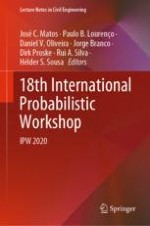2021 | OriginalPaper | Buchkapitel
Fractile Based Sampling Procedure for the Effective Analysis of Engineering Structures
verfasst von : Alfred Strauss, Beatrice Belletti, Thomas Zimmermann
Erschienen in: 18th International Probabilistic Workshop
Aktivieren Sie unsere intelligente Suche, um passende Fachinhalte oder Patente zu finden.
Wählen Sie Textabschnitte aus um mit Künstlicher Intelligenz passenden Patente zu finden. powered by
Markieren Sie Textabschnitte, um KI-gestützt weitere passende Inhalte zu finden. powered by
